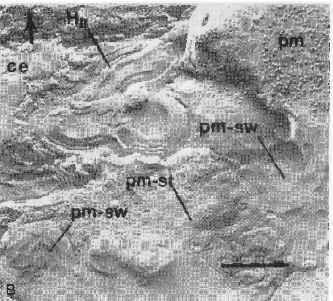X-RAY RUNS: Apply for Beamtime
2017 Nov 1 - Dec 21
2018 Feb 7 - Apr 3
2018 Proposal/BTR deadline: 12/1/17
2018 Apr 11 - Jun 4
2018 Proposal/BTR deadline: 2/1/18
P.L. Steponkus, M. Uemura, R. A. Joseph, S. J. Gilmour
and M. F. Thomashow*
Dept. of Soil, Crop and Atmospheric Sciences, Cornell University
*Dept. of Crop and Soil Sciences, Michigan State University
[Proc. Natl. Acad. Sci. USA 95 (1998)]
The ability to endure low temperatures and freezing is a major
determinant of the geographical distribution and productivity of
agricultural crops. Even in areas considered suitable for the
cultivation of a given species, decreases in yields and crop failure
frequently occur as a result of aberrant freezing temperatures. In spite
of attempts to minimize damage to freezing-sensitive crops – primarily
by using energy-costly practices to modify the microclimate –
substantial economic losses resulting from freezing are incurred
annually in a diverse array of agricultural crops.
This group has only recently provided the first direct evidence that
expression of COR (cold-regulated) genes are functionally involved in
cold acclimation. Simply stated, freezing injury is a consequence of
freeze-induced cell dehydration, which results in several different
lesions in the plasma membrane. In non-acclimated leaves of herbaceous
species, the primary lesion is the result of lamellar-to-hexagonal II
phase transitions in the molecular structure of the plasma membrane,
most often near the chloroplast envelope, as a result of freeze-induced
cell dehydration. Freeze-induced formation of the hexagonal II phase
disrupts both the physical continuity and semipermeable characteristics
of the plasma membrane such that the cells become leaky and flaccid.
Studies using NMR, freeze-fracture electron microscopy, and x-ray
diffraction have shown that COR15a alters the intrinsic curvature of the
inner membrane of the chloroplast envelope and thereby alters the phase
transitions of the membranes. X-ray measurements were used to determine
the structural phases and lattice constants of the membrane walls. These
studies establish that expression of the COR15a gene decreases the
propensity for freeze-induced lesions, and improves the freezing
tolerance, of non-acclimated leaves of A. thaliana and winter cereals
such as rye, wheat, barley, and oat.

High magnification (65,200) of protoplasts showing
ordered HII phase,
well-ordered plasma membrane striated (pm-st) regions,
and loosely ordered swirls (pm-sw). Bar represents 0.25 nanometers.
